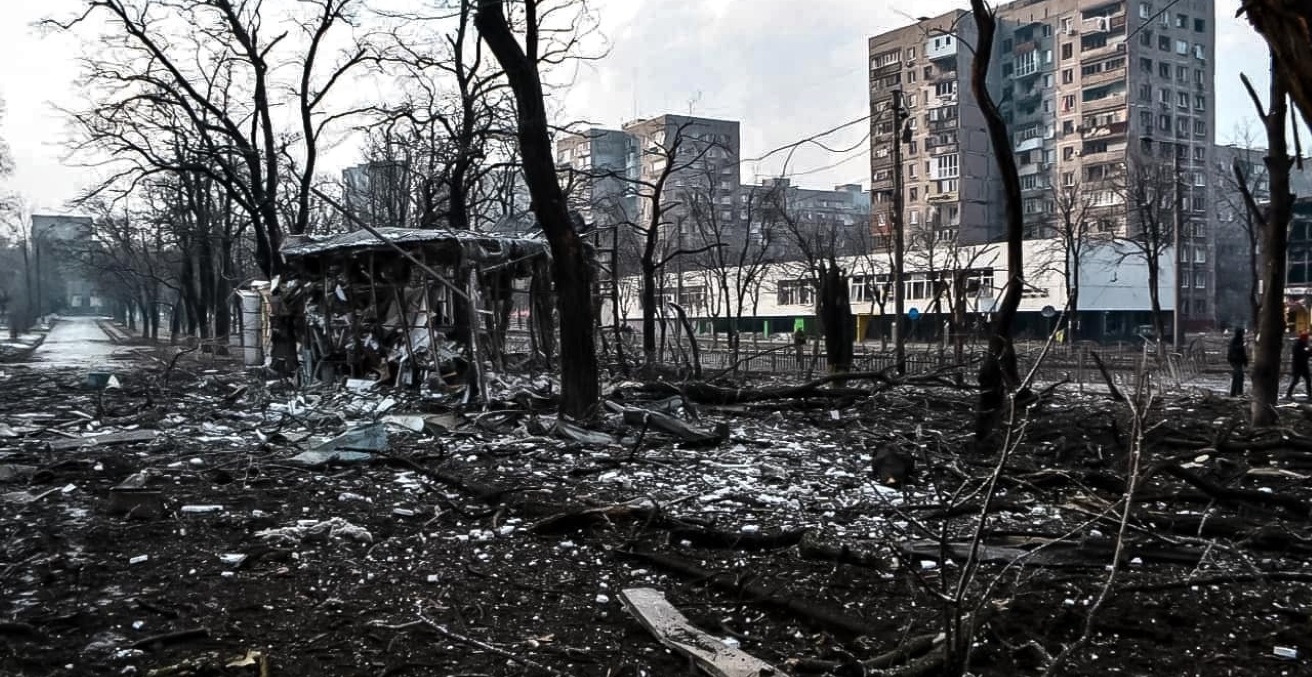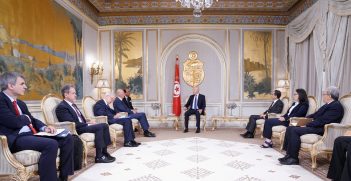Mapping a Future Marshall Plan for Ukraine

The Marshall Plan is again in the news. This is due to its upcoming 75th anniversary as well as the need to discuss post conflict reconstruction in Ukraine.
German Chancellor Olaf Scholz explicitly called for the adoption of a Marshall Plan for Ukraine in June 2022. Estimates put the total of damages to Ukraine’s infrastructure caused by Vladimir Putin’s criminal war of aggression against Ukraine at US $110 billion as of August 2022. This number will only grow while the war continues, meaning only an international coalition of supporting governments and institutions can underwrite Ukraine’s reconstruction.
Kyiv’s recent battlefield gains in the Kherson and Kharkiv region give momentum to the idea that the conflict will eventually be decided in favour of Ukraine, either by defeat of the Russian aggressor or through peace negotiations. It is impossible to predict when that will occur, but it is clear that it will take time to prepare for the complexities, administration, and implementation of what will be a vast post-war Ukrainian recovery process. Now is the time to start planning.
The Marshall plan, officially known as the European Recovery Program of 1948 to 1951, was the United States’ comprehensive economic and development aid package to strengthen democracy and fight autocracy in the form of communism. It was more than just an economic recovery plan, as its official title suggests. The Marshall Plan saw the delivery of economic, administrative, and technical assistance to 17 European states to the tune of US $13 billion aimed at rebuilding industrial and agricultural production and establishing financial stability and interconnectivity of domestic trade. Hailed as a “great humanitarian effort,” the Marshall Plan did create more than foster economic stability and counter the threat of communism. Reconciliation, political and economic stability, and unity among its recipients were some of its long-lasting legacies. Without these, Europe’s economic and military unity and cooperation through the EU and NATO, respectively, would not have been possible.
The first step of developing a Ukrainian Marshall Plan is to identify the key funding stakeholders. The US EU, various G7 members, and Poland are currently the largest providers of grants to support Ukraine’s large monthly fiscal deficit of some US $5-6 billion per month. This deficit is itself a result of Russia’s war of aggression wrecking Ukraine’s economy. Logically, a recovery plan will require the US-led G7 and the EU to be primary funding sponsors. However, it is reasonable to think that the 50 countries, including Australia, currently part of the Ukraine Defence Contact Group and that have pledged to provide Ukraine military resources, will also fund a recovery plan. The expertise of international financial institutions such as the International Monetary Fund (IMF) and World Bank will also be required.
A basic principle of the plan should be to ensure that a majority of funds are grants rather than loans, or even concessionary loans. The US Marshall Plan funds were over 90 percent interest-free grants, with just ten percent as interest-bearing loans. The logic then is the same for Ukraine now. Adding new debt to countries recovering from a devastating war seriously impedes their recovery. Ukraine needs a post-war future predicated on economic recovery and the prospect of rebuilding itself as an integrated European country, not a new mountain of debt. So long as there is a broad enough array of funding sources, the costs to each individual funder will be very manageable.
Another key consideration for recovery will be the sequencing of phases of support. Basic relief is needed immediately and until the war ends. Reconstruction of critical infrastructure is the second phase, as this will provide the essential backbone for broad national recovery. Yet this cannot proceed on any great scale until the Russian aggression ends. Reconstruction post-war offers the chance for Ukraine to modernise its economy by strengthening the business environment (reducing corruption, securing private property rights, and overall strengthening the rule of law) and “leapfrogging” a generation of technologies. The aim should not be to simply “reconstruct” Ukraine’s economy but to create a newer, greener, and more technologically driven economic reality. Ultimately, the recovery plan should also be geared toward EU membership, so modernisation needs to cater to the EU’s accession requirements.
The Marshall Plan envisaged the administration of US federal funds to Europe through one oversight body, the so-called Economic Cooperation Administration, which applied a whole-of-government approach involving private sector expertise. Today, the US on its own cannot shoulder the burden of Ukraine’s recovery financially or politically. Rather, the recovery plan needs to be adapted to the realities of the 21st century international system, including existing aid agencies, global intergovernmental institutions, and multipolar geopolitics. Nonetheless, leadership is required, and Washington has already stepped up to the challenge so far. Yet maintaining broad-based support will be key for the long term. Furthermore, the EU institutions must be prepared to take a sustained leading role in administering and advocating for Ukraine’s version of the Marshall Plan.
Related to the question of how to administer such aid is the question of corruption. Corruption in Ukraine has been a major problem and the subject of many discussions internationally and in Europe prior to the invasion of 24 February 2022. Ukraine ranked 122nd out of 180 countries according to Transparency International’s 2021 Corruption Perceptions Index. Rebuilding needs to include governance reform clauses to satisfy international donors. Here, the expertise of the IMF and World Bank will be critical, as both have extensive experience in administering conditional funding linked to governance reform in countries that experience various types of crises, including conflict. They can provide the credibility that donors will demand.
That said, IMF structural adjustment programmes have been controversial in the past, tending to engender resentment in civil society when such programmes are viewed as prioritising private investors while attacking social welfare spending. Thus, there is a need to balance good governance and economic reform with adequate spending on public goods needed for supporting a war-ravaged population.
While others must play the leading role in Ukraine’s recovery plan, Australia can play a crucial supporting role, much as it has already done throughout Russia’s war of aggression. Under both the current and previous governments, Canberra has been resolute in supporting Ukraine. With nearly AU $400 million in military aid, it ranks among the top providers of miliary aid outside NATO. The question now is whether Western donors and Australia have the political will to carry on and commit to a long-term economic relief package for Ukraine, despite the economic downturn caused first by COVID-19 and then the Ukraine war itself.
To Putin’s great chagrin, all the indications so far are that Ukraine’s supporters have no intention of falling by the wayside. And how could they, given the courage the Ukrainian people have showed in fighting for their right to peace and freedom, in the face of great atrocity and horror? A Marshall Plan for Ukraine would be another testament of enduring commitment by Ukraine’s supporters for its post-war economic recovery and future. This would be good for the morale of all Ukrainians.
Sascha-Dominik (Dov) Bachmann is Professor in Law and Co-Convener National Security Hub (University of Canberra), University of Canberra, and a Research Fellow with the Security Institute for Governance and Leadership in Africa, Faculty of Military Science, Stellenbosch University.
Dr Naoise McDonagh is a Lecturer at the Institute for International Trade, School of Economics and Public Policy, University of Adelaide, and President of the Australian Institute of International Affairs South Australia, a not-for-profit educational association.
This article is published under a Creative Commons Licence and may be republished with attribution.





